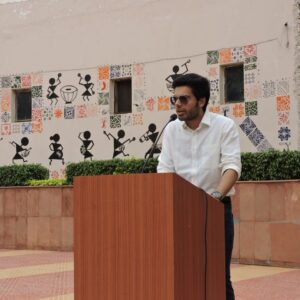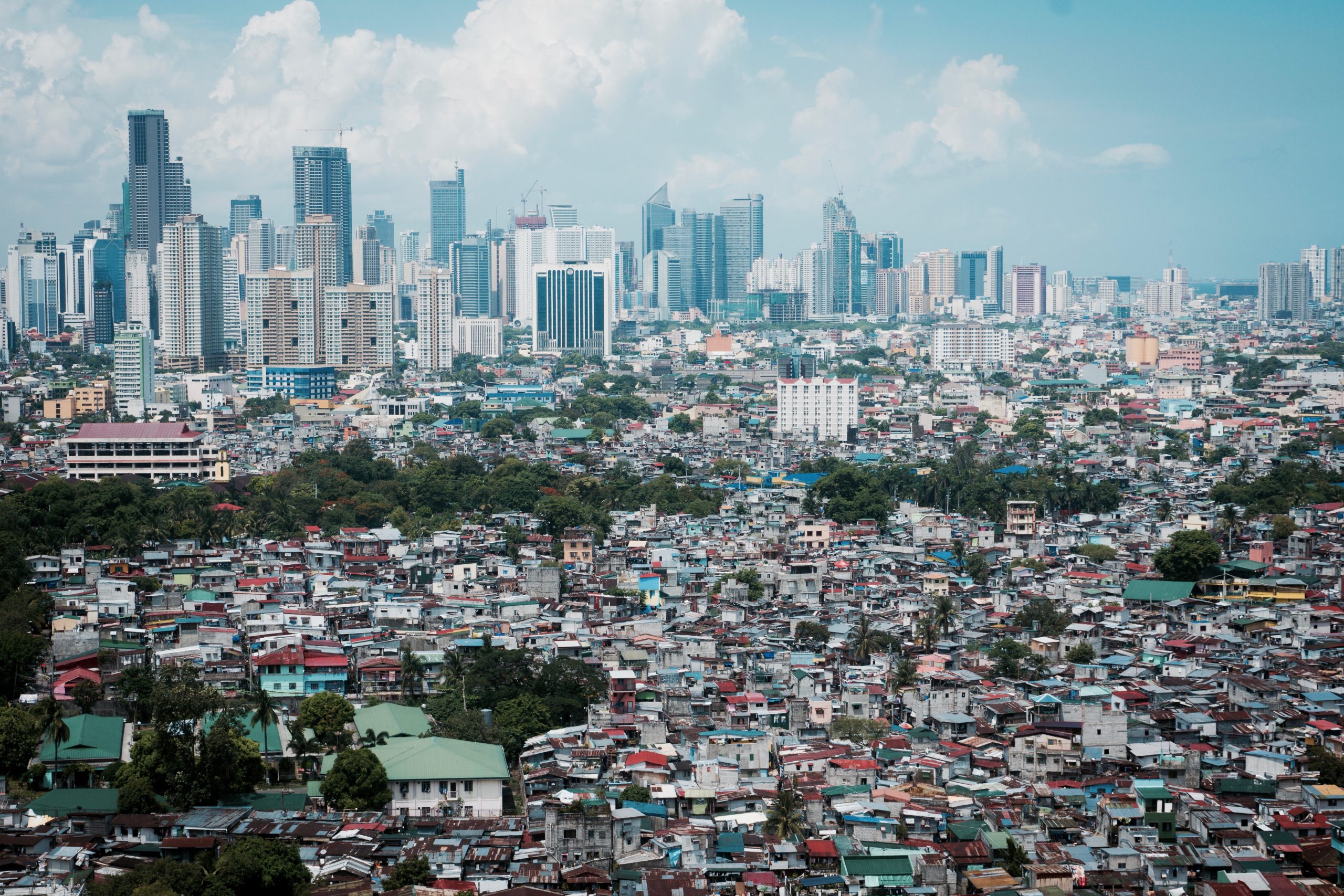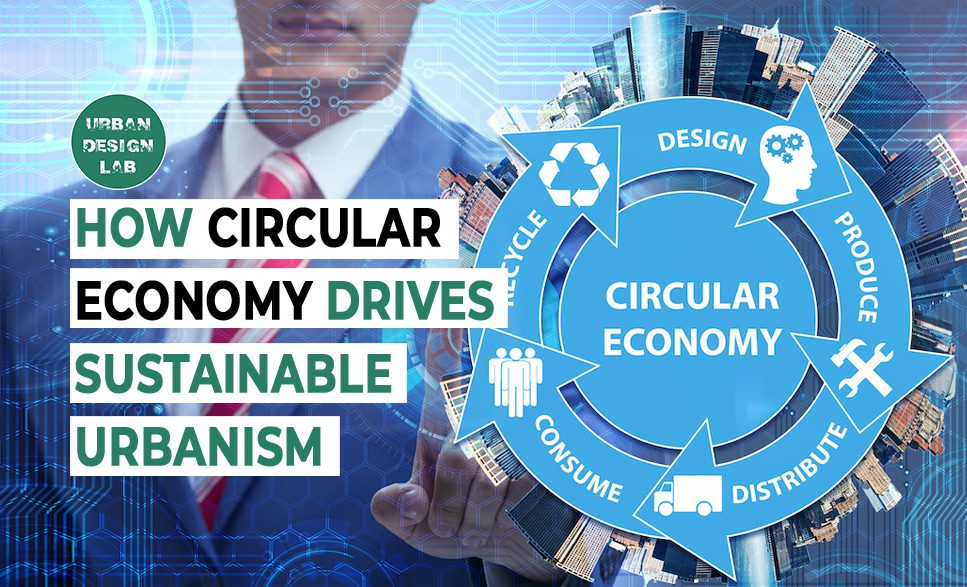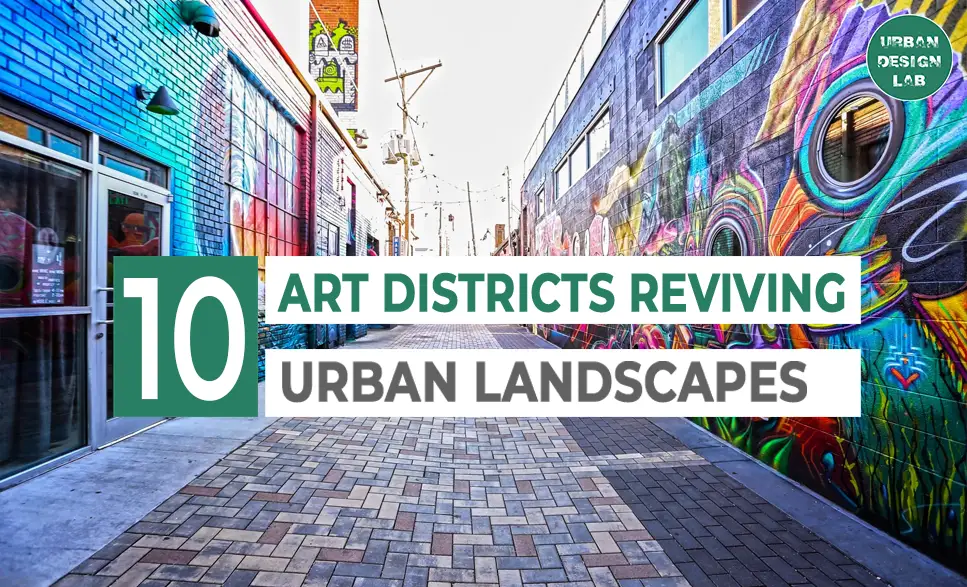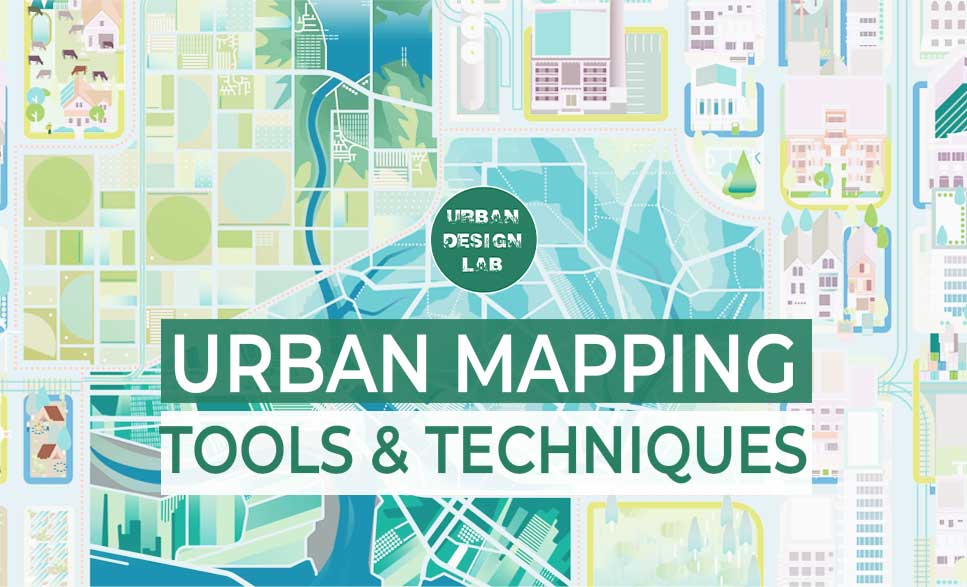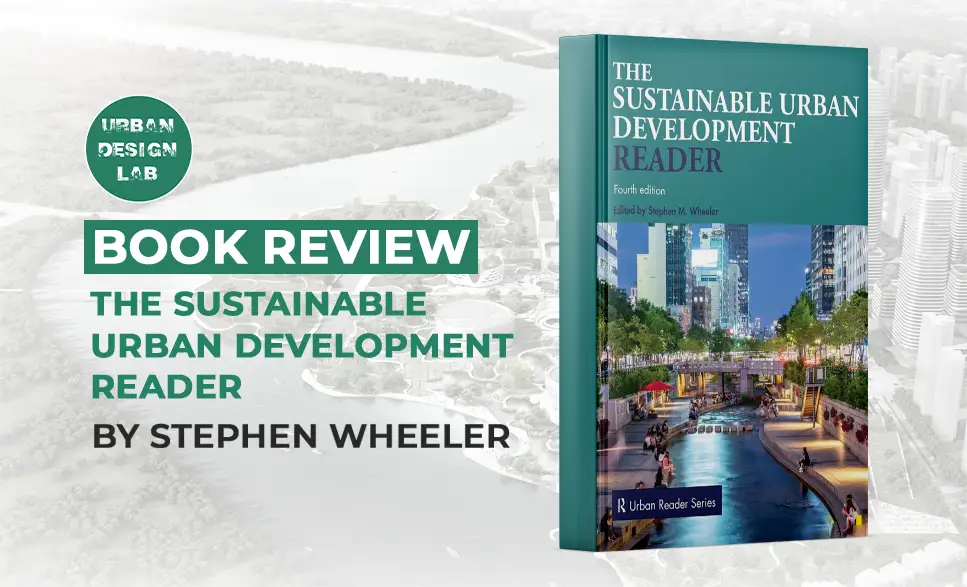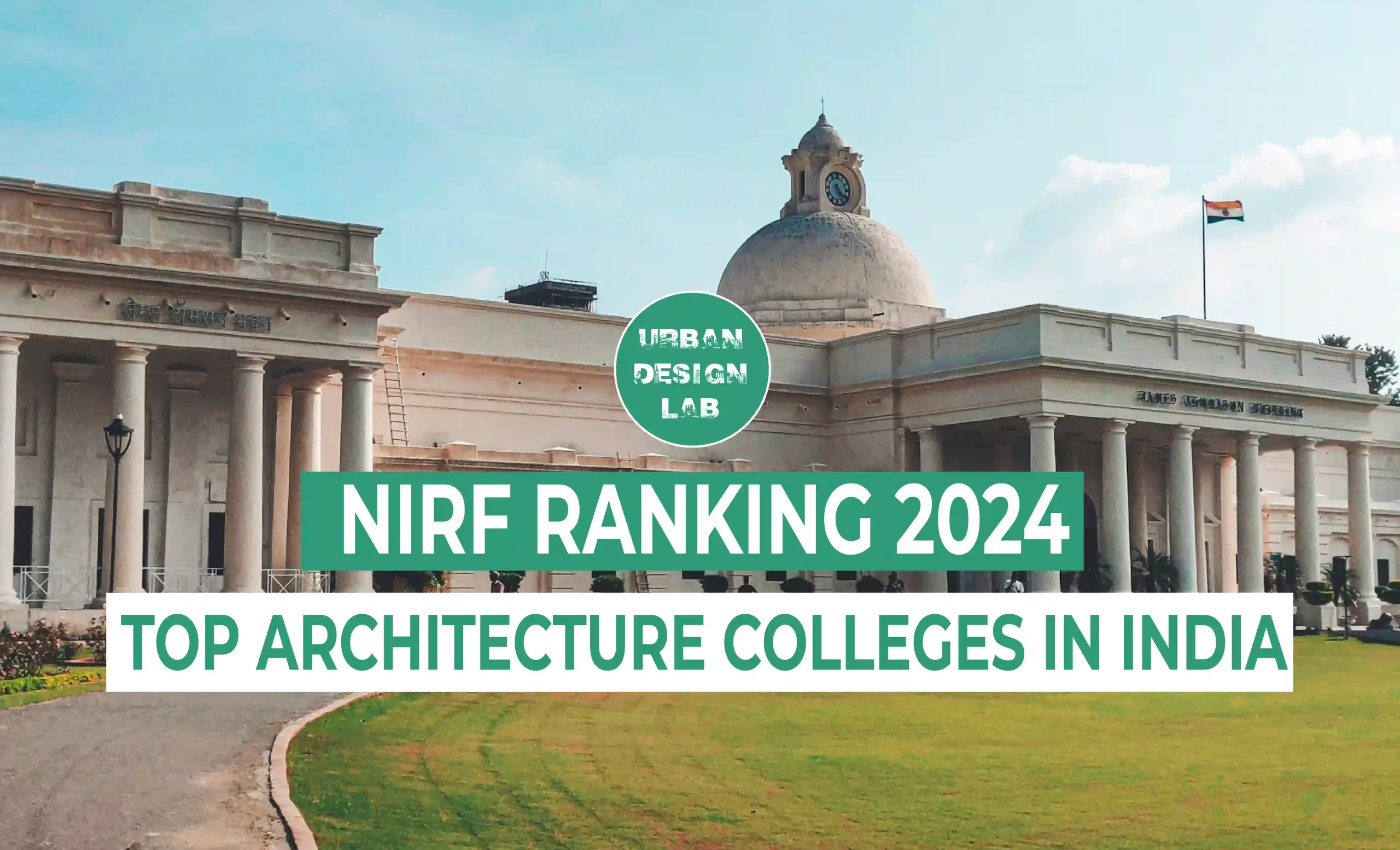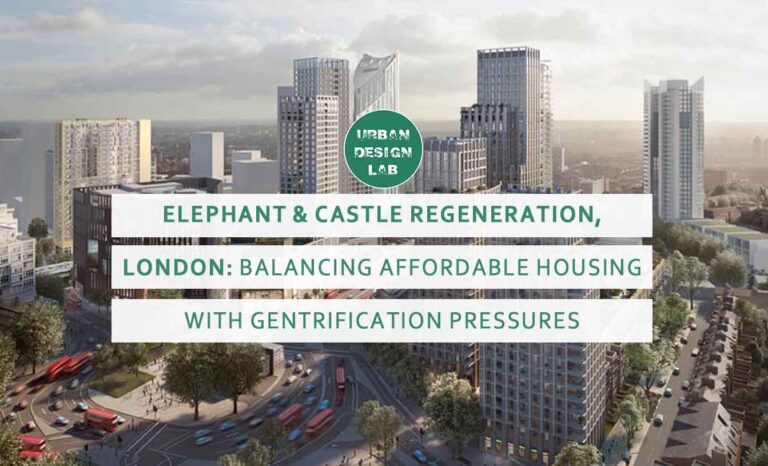
Gentrification and Socio-Spatial Segregation
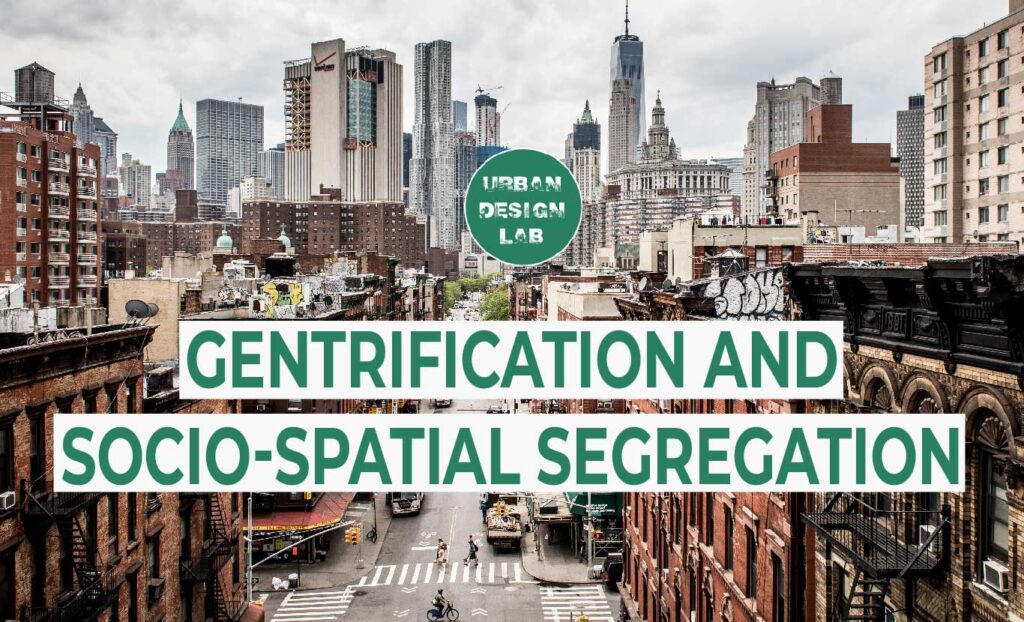
Urban planning is taking place in the country. New policies are being implemented, master plans are being drafted, and a huge chunk of manpower goes into the whole process. At one juncture, development is taking place at a fast pace; it is visible in terms of the new infrastructure coming up, be it private or public. Cities are expanding their footprints, the population is increasing, and migration is taking place. The way organic life is interacting with the cities is ever-changing, every design intervention is facilitating that change. Simultaneously, in the urban setup, gentrification and socio-spatial segregation are taking place, be it due to the socio-economic factor, residential, ethnicity, religion, and so on.
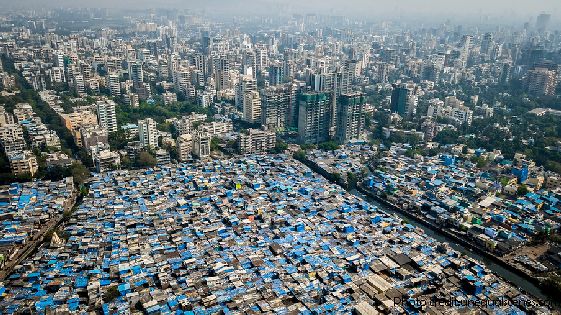
One needs to understand the factors that are leading to this and how is it pertinent in the major cities of the country. Socio-spatial emphasizes how built environments and the people and the societies that occupy them interact together. Socio-spatial segregation would imply exclusion, isolation, subjection, or inferiority (Marcuse, 1997) among different social groups. (Unceta, 2020)
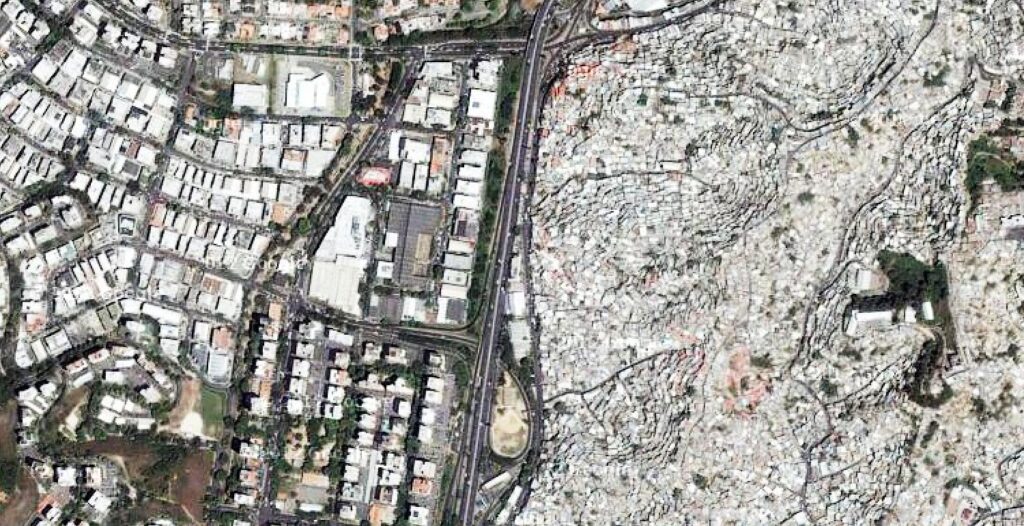
Spaces have not been homogenous, the distribution in cities in terms of neighbourhoods and sectors which comprise streets where migrant workers are living or manufacturing is taking place, high-class neighbourhoods, best institutions, and places that became important as landmarks exist. Spatial patterns are formed as clustering takes place in terms of groups or infrastructure or facilities. In certain instances, people themselves become a part of a cluster as they share certain similarities and may not have any fixed focus. Varied contexts for segregation would exist in separate regions, and a factor can be pertinent at the country level. The key factor in segregation remains the land market, the cheapest housing will be in the desolate and degraded part of the city. (Rasse, 2019)
In urban areas, regions were termed as formal and informal. Formal areas are characterized by adequate planning and facilities (water, electricity, etc) and informal areas include the regions without any urban development. (Krueger , 2022) The regions were either formalized or new developments took place and justified the urban development norm. This does not give the people living in the informal settlements to voice their needs and opinions. (Sundaresan, 2019) In terms of development, the demand for retail spaces, private and world-class healthcare facilities, and everything high-end in terms of services has shot up due to the liberalization policies and globalization. (Ansari, 2009) At the same time, Informal spaces have also grown. The same can be said for Indian states, corporates have got their hold on the location that is centrally placed and the manufacturing part remains at the edge.
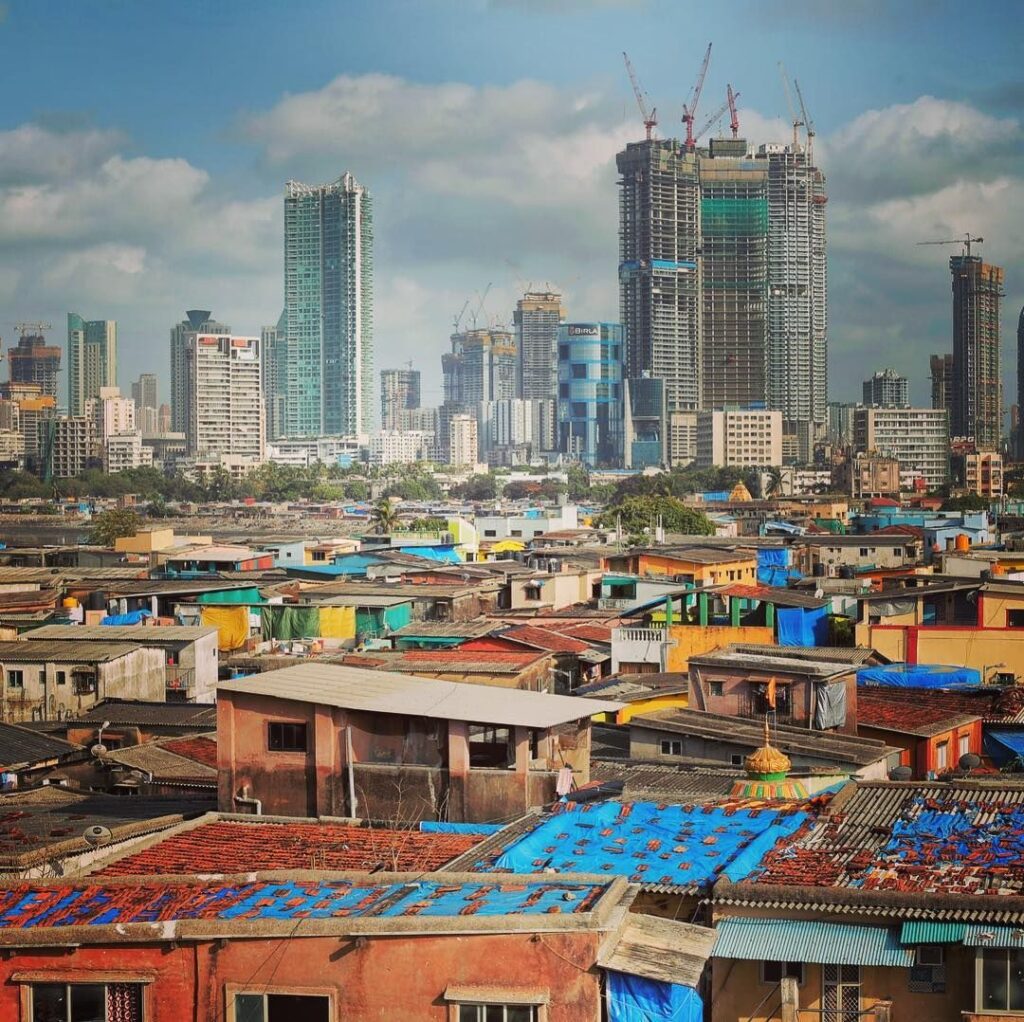
The rich people would not be interested to live in places occupied by the poor, and at the same time, the household won’t be accommodating the rural migrants as they might not have proof of credit. If the divide is existent in terms of race or religion, then communities will be knit in those terms. The scale of segregation determines the degree of separation between the social groups. Segregation can take place on a small scale which would include gated communities for the rich and low-income households on its fringes, in the case of neighbourhood level, the segregation can lead to the formation of small homogenous clusters. Here also, people settle down in the communities, and their social and economic status becomes a factor. Policies were instrumental in segregation during early times based on ethnicity, race, and caste. The homogenous segregation today can be the cause of housing policies and the distribution of neighbourhoods accordingly.
Living in Ghettos or Ghettoization, ie to confine or restrict to a particular area, activity, or category as a term and concept are still widely used in the urban phenomenon. The earliest researches have called segregation natural and positive in the case where the homogeneity between the small groups is beneficial for the people of the group. But homogenous formations with a single social group can also lead to isolation amongst the people as the interaction will be limited. This can lead to the promotion of territorial stigmas as well. (Rasse, 2019)
Another factor at play has been gentrification, or improvisation in terms of the gentry of the city which leads to displacement of the inhabitants in the process has been a phenomenon to be studied since the 19th century. This leads to an increase in the economics of the city in terms of rents, residential and property values thus displacing the affordable housing and in turn, the residents living in the city. The socio-cultural factor also comes into play where the local culture and connections are lost and the minorities are the most affected. (Jason Richardson, 2019) In the early 2000s, the concept of Gentrification was applied in Global South as well, showing that it is a globalized phenomenon and it also expanded the range of processes that would fit its gambit. Mass slum demolitions forced displacements, and conversions of informal to formal housing were being studied as a form of gentrification, irrespective of the fact that other factors might be at play. (Ghertner, 2015)
Caste and religious-based segregation in Varanasi
The city of Varanasi in Uttar Pradesh is identified predominantly with the rituals of Hindus related to death. The researchers study the mutually exclusive groups, Muslims, Dalits, and others (which include the upper and middle-class people). The wards have been ranked based on Infrastructure. The technical data and figures point out the Hindu dominant wards and Muslim minority wards and visa-versa. The segregation reaches extremes inwards near the river and in the central region. The SC households can be found in the outer regions of the city and the ST households are minuscule. (Choudhary, 2020)
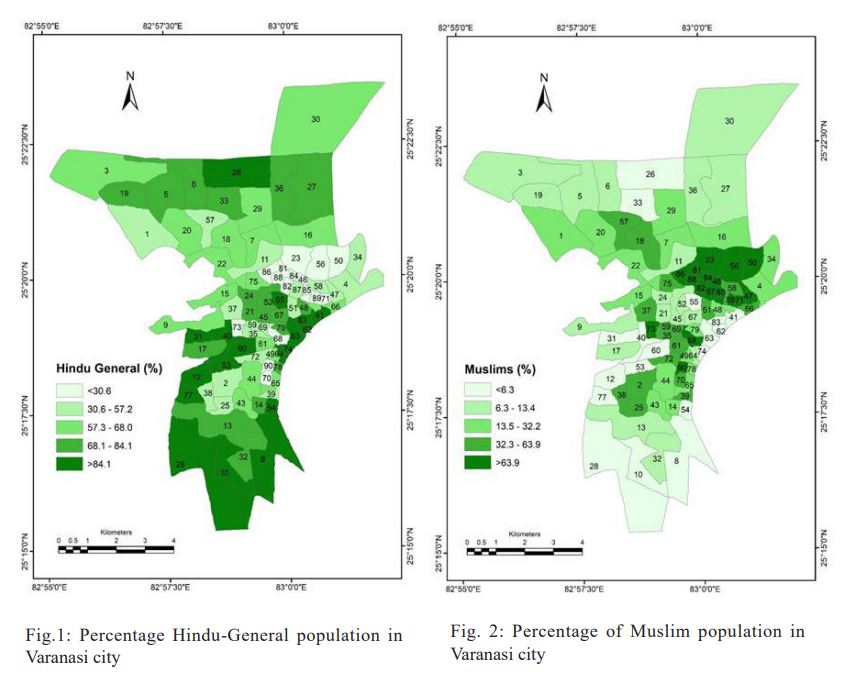
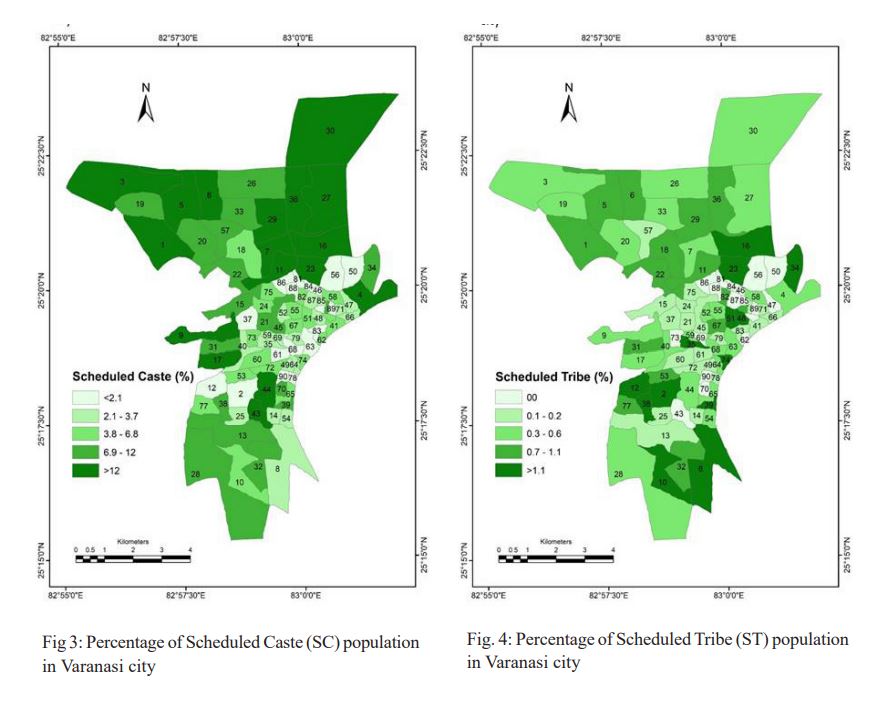
Authors argue that most of the studies done encompass ward-level data in the country, which might under-report the residential segregation in the Indian Cities. The unit of analysis needs to be smaller, in the neighborhood, and street level as the divisions on the smaller scale is still profound and are missing out inwards. (Bharati, 2019)
Caste-Based Segregation in Delhi
The divide has been a character of the village as said by BR Ambedkar that every village will have a ghetto. The same residential-based segregation can be found in the urban cities of the country, following the rural trend. In Delhi, the caste-based segregation study paints a grim picture of the Balmikis residing in slums and resettlement colonies, the walled cities of Paharganj, Karol Bagh, and Kashmere gate. It was found in the resettlement colonies of Ranjeet Nagar and Pandav Nagar, that “the residents were aware of the caste identities of the neighbors and the blocks were identified by the caste that dominated them.” Behind the colonies, the Balmikis live in a squatter settlement.
The families surveyed in the Balmiki Colony, responded about their next of kin living either in the same settlement or in the nearby region. There is a mention of heterogeneity in terms of housing quality, occupations, and incomes within the colony. Many people from parts of the country with different castes settled in the colony. It will be safe to assume that internally the caste-based factor might not be a discriminating factor amongst the residents but the homogeneity of the settlement can be based on socio-economic factors. The respondents mention the city life where they do not face discrimination but overt forms might still be pertinent. It was also found that the residents are not in the favour of addressing the place as ‘Balmiki Colony’, which the politicians hail. The concept of a vulnerable, marginalized community living together prevails in the minds of the residents. The colony has also been labeled a place where people fight and there exist internal divisions within the place which might be attributed to the educational background and physical condition of the neighborhood. (Ganguly,2018)
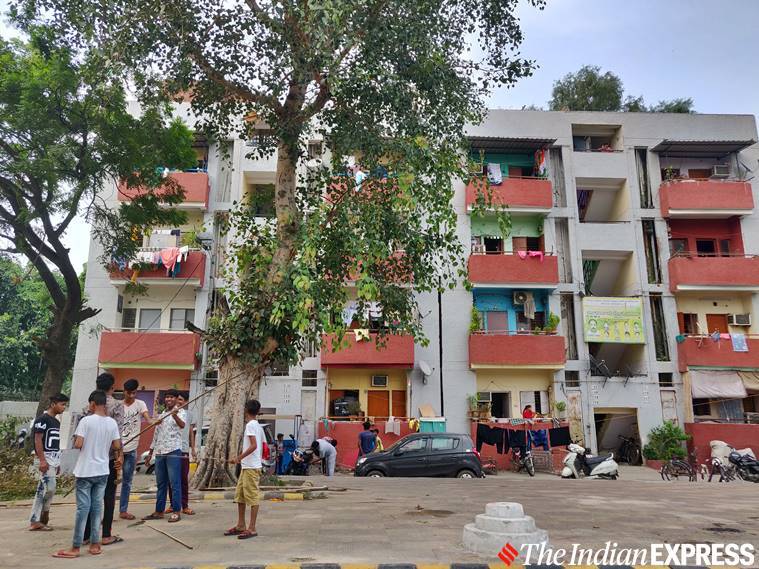
Here the existing caste-based discrimination has led to the formation of colonies and remains the driving factor in spatial segregation also. Education is the topmost requirement to have a position and face no discrimination in society whatsoever. People would not be concerned about caste if the person holds a professional position and reputation in the society, then the segregation factor would shift to the socio-economic factor. Various studies have been carried out in metropolitan cities which prove that residential caste segregation is more prominent than socio-economic segregation. (Vithayathil, 2012 and Haque, 2016)
Gated-Communities
Gated communities have been a part of the Urbanization that is taking place throughout the world. In metros, more and more people are shifting to gated communities as a distinction is formed between the communities catering to particular social and economic statuses. The new satellite cities around the capital region have been flooded with the concept of high-class and high-end gated communities with all the facilities and beauty by the real estate developers. People also attribute living in these communities as a sign of social status confirming being a part of a like-minded group.
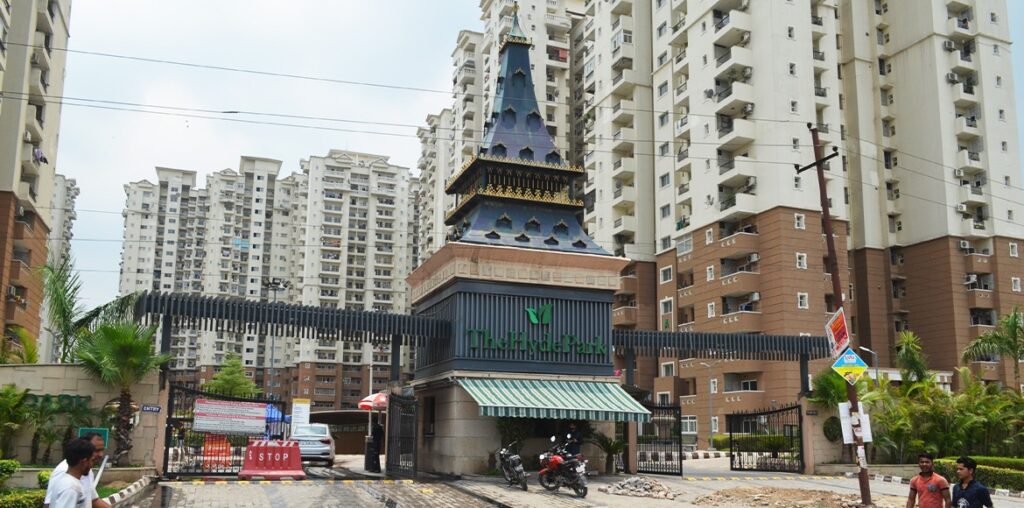
The case study of a Gated community named Heaven City in Kolkata by the researchers provides insights into spatial segregation. The middle-class residents in the community have the leverage to disengage themselves from the outside community.
HC represents a spatial marketing system that has successfully employed ‘spatial purification’ as a trope to normalize inequality through ‘othering’.
The gated communities act as privately owned spaces by a collective number of users, who have access and ownership. The private space is differentiated by boundary walls and gates in terms of physical aspects. Even though the facilities provided are shared among the members, they are a part of the same social group. The society, Heaven City is flanked by all the amenities, ranging from a clubhouse, pool, and gym to medical facilities and preschool. The adjoining proposed development includes modern facilities such as shopping malls and multiplexes.
The findings of the Semi-Structured Interviews by the researchers include a sense of feeling secure in the complex, that is guarded against the world of ‘others.’
The security from the ‘unruly’ outside world of old ideas and living styles, with rural migrants, and slum-dwellers that are little more than criminals (Srivastava 2012).
There is a spatial purity that also exists in the residents of the community, where the outsiders are considered impure by their habits and livelihoods. Strict vigilance is maintained in the complex for the outsiders and the humanizing effect is missing, the people from outside are mere service providers. The higher income of the residents can provide them the sense of privilege they find inside the complex, and about their neoliberal consumption patterns. (Chaudhuri, 2021) This situation is the same in all the gated communities be it whichever country across the world.
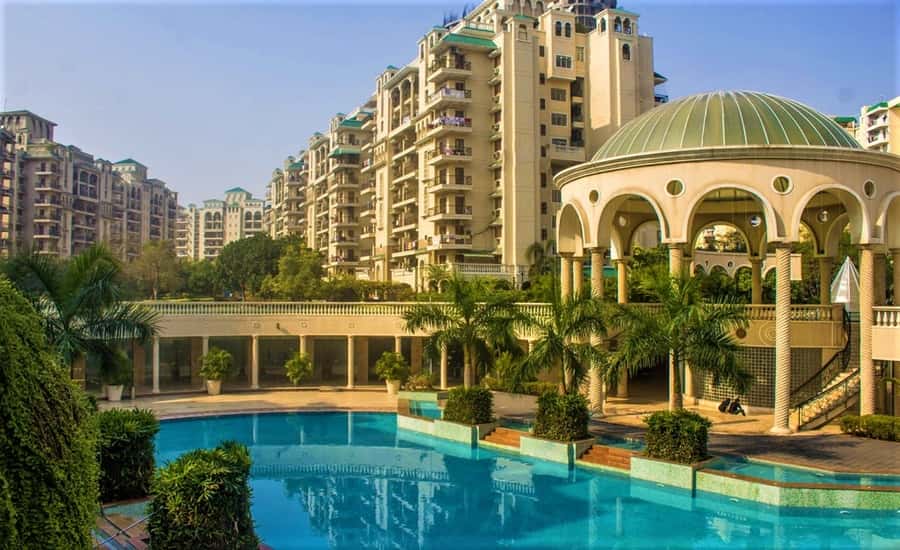
Gentrification along the Sabarmati Riverfront Development
The project that was proposed in the late 1990s had the provisions in place and in the plan to resettle the people residing along the river stretch of the proposal. The compensation in terms of land and housing to be provided was in line with the inclusion policy of all the people. Thus, gentrification wouldn’t have been at play in the case. Gradually as the project progressed, there were anomalies in the collection of data in terms of the number of residential and slum units and there were reports of forceful and threatening eviction of the slum dwellers. In the decade after 2000, the whole outline of inclusion of people shifted through institutional and political regimes. The approach taken up by the authorities kept on changing its course as the project progressed and so the shifting and relocating practices also changed. The court was involved in the process which placed the authorities in check, number of on-ground actors were also involved with the residents for their mobilization as well as support. The resettlement itself was carried out as and when deemed fine by the authorities as the slums became an obstacle in the construction. As aptly mentioned by the author-
“….the riverfront slum residents have thus been treated as beneficiaries and non-citizens whose lives can be placed in a protracted state of limbo, about whom decisions can be made suddenly, without warning, upsetting and unsettling lives and livelihoods without any thought to their present or futures, rather than as citizens who have a right to know, to plan their presents and futures, and have a legitimate voice in decision-making.”
The land was cleared to attract private funding for development which opened the gates for socio-spatial segregation as per the process involved and led to gentrification as well. (Renu, 2012)
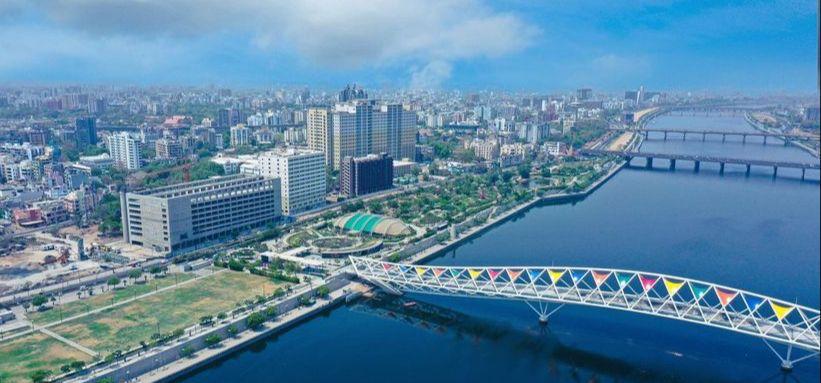
Segregation is taking place in terms of society, where several factors are involved. People are opting to segregate themselves into their privileged groups. The government policies in terms of housing, where a fixed percentage of units are kept for the EWS (Economically- weaker sections), are functioning to lessen the divide, but then again, the social behavior among people belonging to different economic statuses might not change. The case studies mentioned and researched by the authors on-ground depict a divided mindset, that is still very much present. In a liberal economy, there will be people who would prefer collective private spaces without even a hint of tightly packed informal settlement. The change in mindset and effective on-ground implementation of the government policies might facilitate the outlook of spaces to a certain extent.
References
- Ansari, J. (2009). Revisiting urban planning in South Asia. Global Report on Human Settlements, 20.
- Bharathi, N., Malghan, D., & Rahman, A. (2019). Neighbourhood-scale residential segregation in Indian metros.
- Choudhary, B. K., Sinha, S., & Rana, M. J. (2020). Spatial segregation in Vanarasi: caste and religion based exclusion/inclusion across municipal wards. Transactions, 42(1), 21-34.
- Desai, Renu. (2012). Governing the Urban poor: Riverfront development, slum resettlement and the politics of inclusion in Ahmedabad. Economic and Political Weekly. 47. 49-56.
- Ganguly, S. (2018). Socio-spatial Stigma and Segregation. Economic & Political Weekly, 53(50), 51.
- Ghertner, D. A. (2015). Why gentrification theory fails in ‘much of the world’. City, 19(4), 552-563.
- Haque, I. (2016). Discriminated urban spaces: A study of spatial segregation in urban West Bengal. Economic and Political Weekly, 41-50.
- Jason Richardson, B. M. (2019, March 19). Shifting Neighbourhoods-Gentrification and Cultural displacement in American Cities . Retrieved from National Community Reinvestment Coalition :
- Krueger, E.H., Constantino, S.M., Centeno, M.A. et al. Governing sustainable transformations of urban social-ecological-technological systems. npj Urban Sustain 2, 10 (2022). https://doi.org/10.1038/s42949-022-00053-1
- Marcuse, P. (1997). The enclave, the citadel, the ghetto. Urban Affairs Review, 33(2) 228–264. https://doi. org/10.1177%2F107808749703300206
- Rasse, A. (2019). Spatial segregation. The Wiley Blackwell Encyclopedia of Urban and Regional Studies, 1-9.
- Roy Chaudhuri H, Jagadale SR. Normalized Heterotopia as a Market Failure in a Spatial Marketing System: The Case of Gated Communities in India. Journal of Macromarketing. 2021;41(2):297-314. doi:10.1177/0276146720957382
- Srivastava, S. (2012), “National Identity, Bedrooms, and Kitchens: Gated Communities and New Narratives of Space in India” in The Global Middle Classes: Theorizing Through Ethnography, M Liechty, C. Freeman, and R. Heiman eds. Santa Fe: School of Advanced Research Press, 57-84.
- Sundaresan, J. (2019). Urban planning in vernacular governance: Land use planning and violations in Bangalore, India. Progress in Planning, 127, 1-23.
- Unceta, Pablo & Hausleitner, Birgit & Dąbrowski, Marcin. (2020). Socio-Spatial Segregation and the Spatial Structure of ‘Ordinary’ Activities in the Global South. Urban Planning. 5. 303-318. 10.17645/up.v5i3.3047.
- Vithayathil, T., & Singh, G. (2012). Spaces of discrimination: residential segregation in Indian cities. Economic and Political Weekly, 60-66.
Saksham is a writer, researcher, architect and an editor. He is enthusiastic about the natural environment and concerned about preserving the natural essence of space. He believes that words emanating from the soul level have the potency to touch millions of others without any efforts.
Related articles

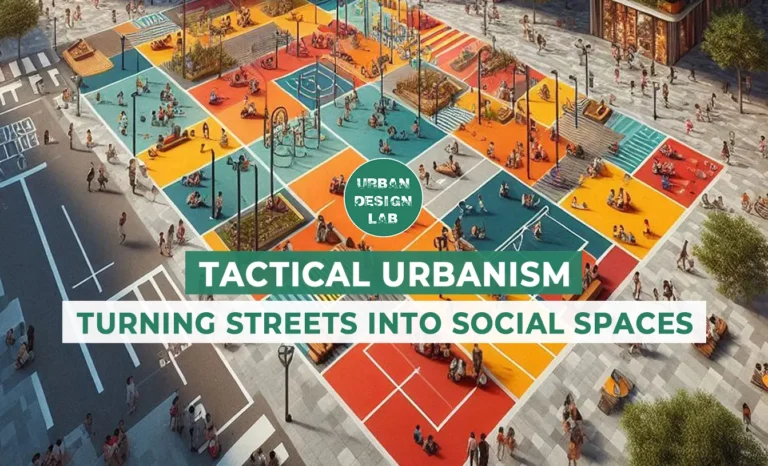
Tactical Urbanism: Turning Streets into Social Spaces
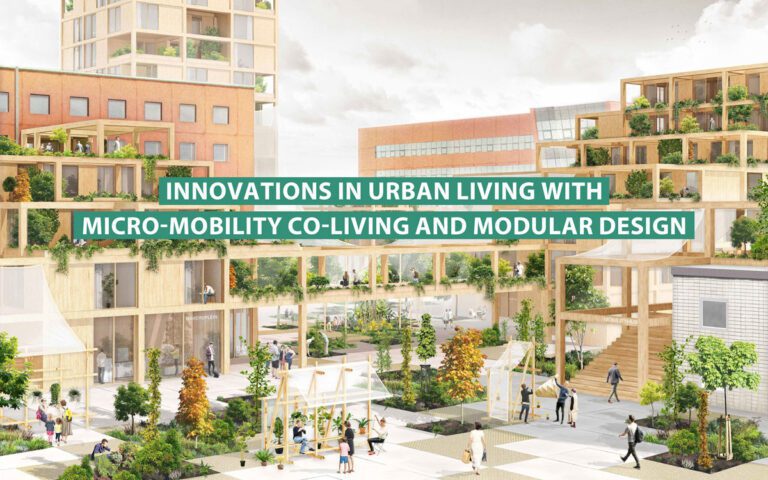
Micro-Mobility and Modular Design in Urban Living
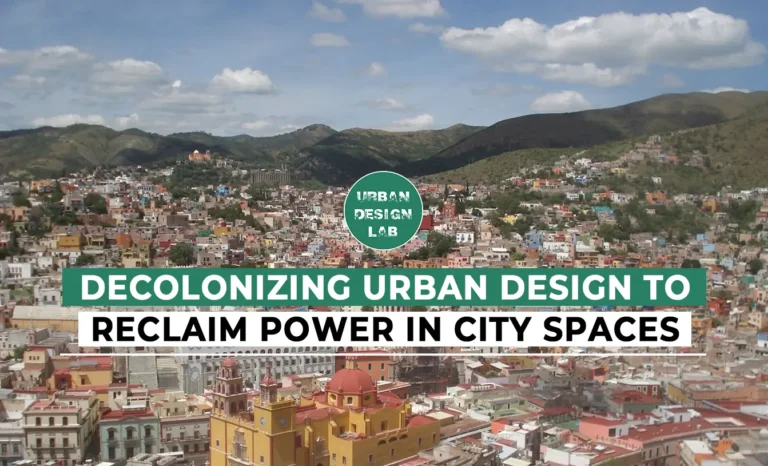

Rethinking Urban Planning Careers in India

5-Days UDL GIS
Masterclass
GIS Made Easy – Learn to Map, Analyse, and Transform Urban Futures
Session Dates
14th-18th July 2025

Free E-Book
From thesis to Portfolio
A Guide to Convert Academic Work into a Professional Portfolio”
Recent Posts
- Article Posted:
- Article Posted:
- Article Posted:
- Article Posted:
- Article Posted:
- Article Posted:
- Article Posted:
- Article Posted:
- Article Posted:
- Article Posted:
- Article Posted:
- Article Posted:
- Article Posted:
- Article Posted:
Sign up for our Newsletter
“Let’s explore the new avenues of Urban environment together “


